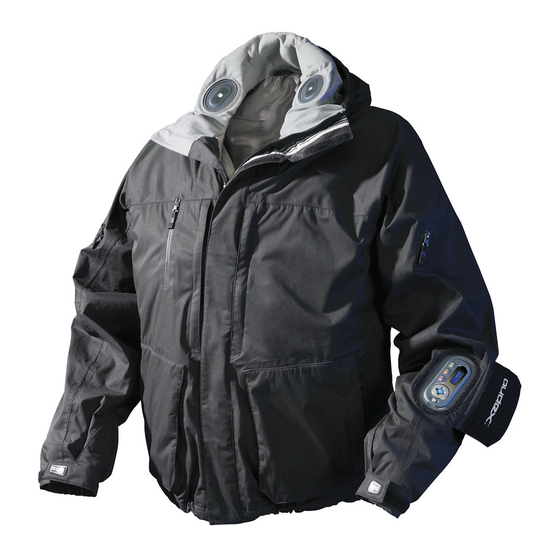Motorola Audex Jacket Series User Manual - Page 27
Browse online or download pdf User Manual for Headsets Motorola Audex Jacket Series. Motorola Audex Jacket Series 30 pages.

Use your wireless phone to help others in emergencies. If you see an auto accident, crime in
progress, or other serious emergency where lives are in danger, call 9-1-1 or other local emergency
number, as you would want others to do for you.
Call roadside assistance or a special non-emergency wireless assistance number when
necessary. If you see a broken-down vehicle posing no serious hazard, a broken traffic signal, a
minor traffic accident where no one appears injured, or a vehicle you know to be stolen, call
roadside assistance or other special non-emergency wireless number.
1.Wherever wireless phone service is available. (ITC00-011)
1
1
Industry Canada Notice to Users
Industry Canada Notice to Users
Operation is subject to the following two conditions: (1) This device may not cause interference and
(2) This device must accept any interference, including interference that may cause undesired
operation of the device Ref IC RSS 210 Sec. 5.11. The term "IC:" before the certification/registration
number only signifies that registration was performed based on a Declaration of Conformity
indicating that Industry Canada technical specifications were met. It does not imply that Industry
Canada approved the equipment. See Ref IC Self-Marking 6(f) and RSP-100 Sec. 4.
FCC Notice to Users
FCC Notice to Users
Users are not permitted to make changes or modify the device in any way. Changes or modifications
not expressly approved by the party responsible for compliance could void the user's authority to
operate the equipment. See 47 CFR Sec. 15.21.
This device complies with part 15 of the FCC Rules. Operation is subject to the following two
conditions: (1) This device may not cause harmful interference, and (2) this device must accept any
interference received, including interference that may cause undesired operation. See 47 CFR
Sec. 15.19(3).
This equipment has been tested and found to comply with the limits for a Class B digital device,
pursuant to Part 15 of the FCC Rules. These limits are designed to provide reasonable protection
against harmful interference in a residential installation. This equipment generates, uses and can
radiate radio frequency energy and, if not installed and used in accordance with the instructions,
may cause harmful interference to radio communications. However, there is no guarantee that
interference will not occur in a particular installation. If this equipment does cause harmful
interference to radio or television reception, which can be determined by turning the equipment off
and on, the user is encouraged to try to correct the interference by one of the following measures:
• Reorient or relocate the receiving antenna.
• Increase the separation between the equipment and receiver.
• Connect the equipment into an outlet on a circuit different from that to which the receiver
is connected.
• Consult the dealer or an experienced radio/TV technician for help.
The antenna(s) used for this transmitter must not be co-located or operating in conjunction with any
other antenna or transmitter.
25
